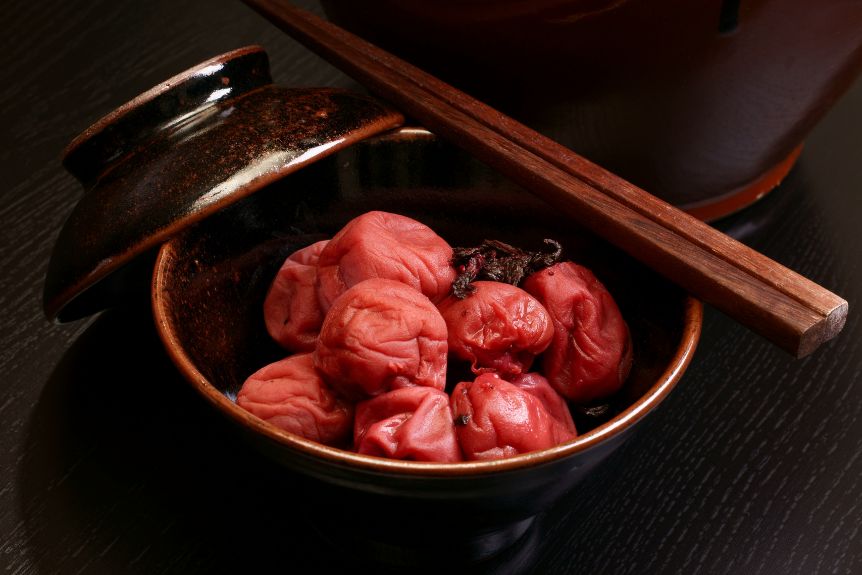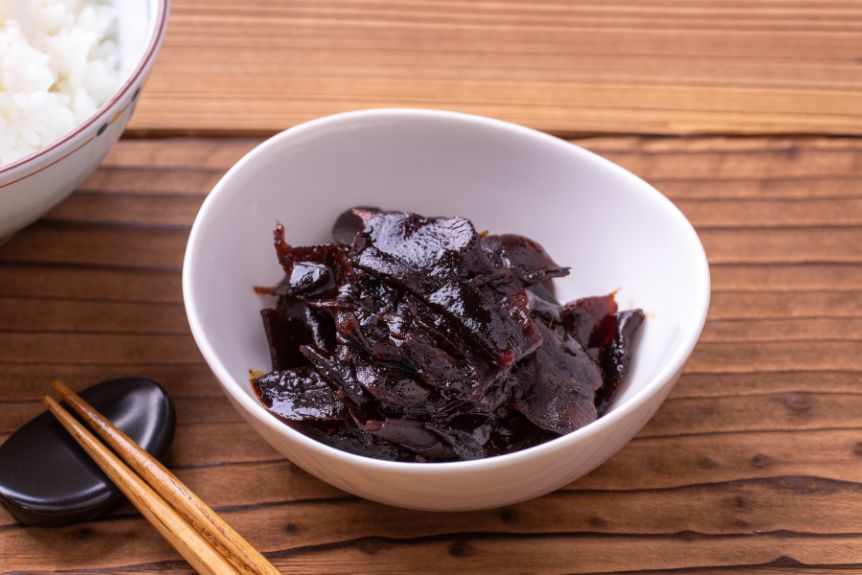Join us on a culinary adventure into the wonderful world of Japanese pickling! Beyond the usual tsukemono, there’s a whole universe of flavors, techniques, and traditions waiting to be discovered. Get ready to dive into the delicious art of Japanese pickling like never before!
Picture yourself savoring the vibrant crunch of pickled ginger, but don’t stop there – it’s merely the gateway to a gastronomic journey of a lifetime. Get ready to uncover the secrets of fermentation, where vegetables come alive with umami-rich delight.
Discover the seasonal varieties that mark the passage of time on Japan’s culinary calendar. With each homemade pickle, you’ll not only connect with nature’s rhythm but also weave a rich cultural tapestry into your culinary repertoire.
Are you ready to delve deeper into this savory expedition? Join us as we unlock the stories waiting to be told and unveil the hidden treasures that lie beyond the surface. Get ready to pickle your curiosity and embark on a journey beyond imagination.
The Origins of Pickling
The tradition of pickling in Japan has deep roots, tracing back to ancient times when it wasn’t just a culinary practice but a vital preservation method. You see, before refrigeration or modern preservation techniques, your ancestors had to find innovative ways to keep their food edible for longer periods.
This necessity birthed the art of pickling, a skill you can now master to take control of your culinary creations and food preservation.
By understanding the origins of pickling, you’re not just learning to mix vinegar, salt, and vegetables. You’re tapping into centuries of wisdom, allowing you to preserve seasonal flavors and enjoy them year-round.
This isn’t just about following recipes; it’s about becoming part of a tradition that has sustained communities through the seasons.
Embrace this practice, and you’ll have the power to transform simple ingredients into lasting treasures. Whether you’re looking to elevate your cooking or ensure your pantry is always stocked, mastering the art of Japanese pickling puts you in control.
You’re not just making food last longer; you’re enriching its flavor, texture, and nutritional value. This is your chance to command your kitchen and honor a timeless tradition.

Types of Japanese Pickles
Japan’s culinary landscape offers a diverse array of pickles, each with its unique taste and preservation method. As you delve into the world of Japanese pickles, you’ll discover a variety that goes beyond the familiar tsukemono. It’s your turn to explore these flavors and incorporate them into your culinary repertoire.
First, there’s umeboshi, salt-pickled ume fruits known for their sourness. You can control their tang by adjusting the pickling time.
Next, consider trying shibazuke, a mix of cucumber and eggplant fermented in ume vinegar. Its vibrant hue and crisp texture add a punch to any dish.
Don’t overlook takuan, daikon radish pickled in rice bran. Its crunchy texture and unique flavor make it a must-try. You can adjust its sweetness and crispness to your liking.
Kombu tsukudani, kelp simmered in soy sauce, offers a savory option that pairs well with rice. Its umami depth is in your hands, depending on how long you simmer it.
The Art of Fermentation
Diving into the art of fermentation, you’ll uncover the transformative power that turns simple ingredients into complex flavors cherished in Japanese cuisine. This process isn’t just about waiting; it’s about steering.
You’re in command, guiding the transformation of vegetables and fruits into tangy, savory, and umami-rich delights. Fermentation is your tool to wield, a method that enhances the nutritional value and digestibility of foods while introducing a depth of flavor that raw ingredients alone can’t achieve.
To master this art, you’ll need to understand the balance of salt, temperature, and time. Salt acts as a gatekeeper, controlling which bacteria thrive, ensuring that your pickles ferment safely and develop the desired taste. Temperature, too, plays a crucial role.
The warmer your fermenting environment, the quicker the process, but too warm, and you risk spoilage. Time, then, becomes your measure of patience. Longer fermentations deepen flavors, transforming your pickles into something extraordinary.

Seasonal Varieties of Japanese Pickling
Exploring seasonal varieties takes your understanding of fermentation further, letting you discover how time of year influences the art and flavors of Japanese pickling.
As you dive deeper, you’ll realize that mastering the timing of pickling isn’t just about following recipes to the letter; it’s about seizing control over the intricate dance of flavors, ensuring they’re at their peak.
Spring offers tender vegetables like young ginger and bamboo shoots, ideal for quick pickling. This method captures their freshness, adding a crisp, lively note to your table.
Summer, with its abundance of cucumbers and eggplants, calls for salt pickling, a technique that draws out moisture and concentrates flavors, giving you a refreshing counterpoint to the season’s heat.
Come fall, you’ll find yourself reaching for heartier vegetables like daikon and kabocha. These are perfect for longer fermentation processes, allowing deep, complex flavors to develop, enriching your meals with umami and warmth.
Winter’s preserved treats, like nukazuke (rice bran pickled vegetables), offer a taste of the past seasons, reminding you of the year’s bounty.
Embrace the cycle of seasons, and you’ll command a rich palette of flavors, making every meal an expression of the moment.
Crafting Homemade Delights
Venturing into the world of homemade Japanese pickles allows you to tailor flavors and textures to your personal taste, transforming ordinary meals into remarkable culinary experiences. You’re not just making pickles; you’re crafting a unique extension of your culinary identity.
Imagine the satisfaction of serving a dish accentuated with pickles you’ve seasoned to perfection. It’s not only about the pride of creation but also about the control you wield over your ingredients. You decide the crunch of your cucumbers, the tang of your turnips, and the sweetness of your carrots.
Diving into this craft, you’ll find it’s surprisingly simple. Start with fresh, seasonal produce for the best results. Mix your brine with a careful balance of salt, sugar, and vinegar, adjusting according to your preference. Experimentation is key; perhaps you’ll discover a penchant for adding a hint of chili or a sprinkle of sesame seeds.
Each batch is a new opportunity to refine your technique, to make each pickle a little bit more ‘you.’
Conclusion
And there you have it, you’ve just scratched the surface of Japan’s pickling universe. From its ancient origins to the diverse types of tsukemono, you’ve journeyed through the meticulous art of fermentation and explored the seasonal varieties that make every bite a discovery.
Now, armed with knowledge and perhaps inspired, you’re ready to craft your own homemade delights.
But wait, is pickling really worth all the effort? Some may argue that it’s easier and more convenient to simply buy pickles from the store. Why go through the trouble of preparing and waiting for weeks when you can have instant pickles at your fingertips?
We want to hear your thoughts! Do you believe that homemade pickles are worth the time and effort? Or do you prefer the convenience of store-bought options? Leave a comment below and let’s know your perspective.
Remember, each opinion adds depth to the conversation, and we’re excited to hear what you have to say. Dive in and share your flavorful thoughts.




Konnichiwa! (Hello!) I'm Pat Tokuyama, a Japanese tofu cookbook author, who travels for music, food, and adventure. If you like Japanese tea, checkout some of the newestorganic japanese tea, matcha bowls and noren and more!
** Curious about the Plant Based Japanese Cooking Club? ** Learn more here!